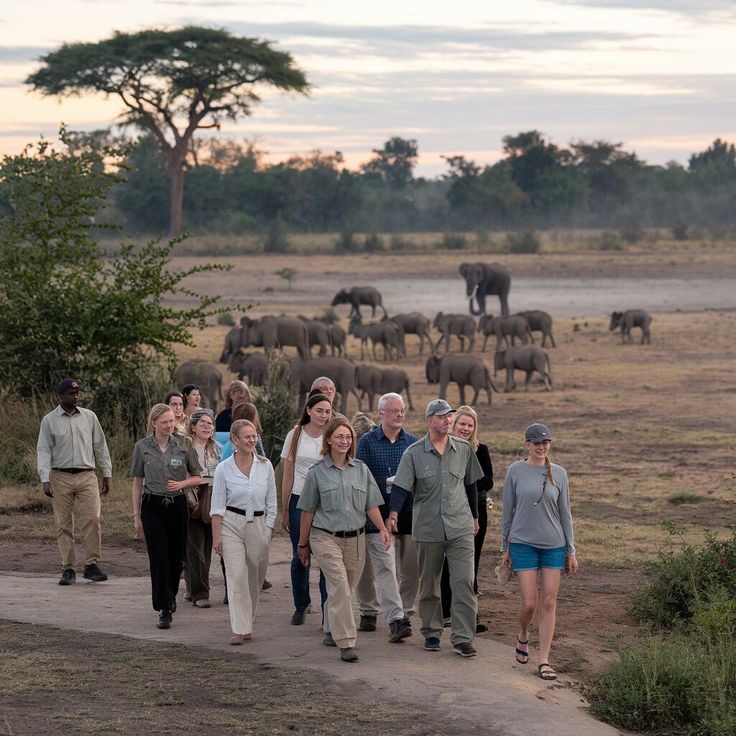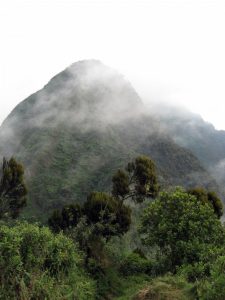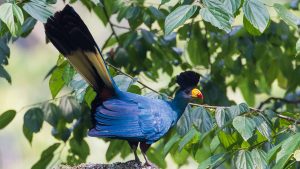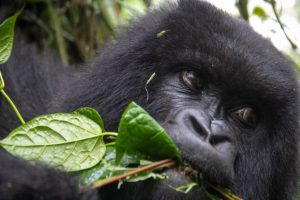Uganda is known as the “Pearl of Africa,” and for good reason. Beyond gorilla trekking and traditional vehicle safaris, nature walking safaris in Uganda offer travelers an intimate experience with the country’s rich biodiversity, landscapes, and local culture. These safaris allow visitors to explore forests, savannahs, riversides, and waterfalls on foot, providing close encounters with wildlife, plants, and bird species in their natural habitat. Nature Walking Safaris in Uganda
What is a nature walking safari in Uganda?
A nature walking safari is an immersive wildlife experience where travelers explore national parks, forests, or savannahs on foot, guided by trained rangers or naturalists. Unlike traditional vehicle safaris, walking safaris allow visitors to notice smaller wildlife, track animal footprints, observe birdlife up close, and appreciate the intricate ecosystem of Uganda’s wilderness. Walking safaris are ideal for travelers seeking adventure, photography opportunities, and a deeper connection with nature. Nature Walking Safaris in Uganda
Where can you do walking safaris in Uganda?
Uganda offers several excellent destinations for walking safaris. Bwindi Impenetrable Forest and Mgahinga Gorilla National Park provide dense forest trails, where travelers can spot primates, birds, and unique plants. Kibale Forest National Park is famous for chimpanzee trekking and guided forest walks. Queen Elizabeth National Park offers savannah walking safaris near Kasenyi plains and crater areas. Murchison Falls National Park combines walking trails with riverine wildlife exploration, allowing visitors to see elephants, giraffes, and buffalo from a safe distance.
What wildlife can you see on a walking safari in Uganda?
Walking safaris in Uganda allow for a diverse range of wildlife sightings. In forests, travelers may see chimpanzees, monkeys, duikers, and giant forest hogs. Savanna walks may reveal elephants, buffalo, giraffes, antelopes, lions, and hyenas. Birdwatchers can spot over 1,000 species of birds across Uganda, including hornbills, turacos, and the rare shoebill stork near wetlands. Walking safaris also provide opportunities to observe insects, reptiles, and small mammals often missed during vehicle safaris.
How long does a walking safari in Uganda last?
The duration of a walking safari varies depending on the park and itinerary. Most walking safaris last 2–5 hours per session, though full-day walking safaris are available in some parks, especially when combined with other activities like boat cruises or gorilla trekking. Multi-day walking safaris allow travelers to explore different trails, observe seasonal wildlife changes, and immerse themselves in Uganda’s natural environment.
Are walking safaris in Uganda safe?
Yes, walking safaris in Uganda are safe when conducted with trained guides and park rangers. Rangers ensure the safety of visitors by providing information on wildlife behavior, maintaining safe distances, and monitoring the environment. Safety protocols include traveling in groups, carrying first aid kits, and avoiding sudden movements near animals. Walking safaris are designed to minimize risk while offering close encounters with nature.
What is the best time to do a walking safari in Uganda?
The dry seasons from December to February and June to September are ideal for walking safaris. Trails are more accessible, wildlife is concentrated around water sources, and visibility is excellent for photography. The wet seasons (March–May and October–November) offer lush landscapes and abundant birdlife but may make walking trails muddy and challenging. Choosing the right season ensures both safety and a rewarding safari experience.
Do walking safaris in Uganda require guides or permits?
Yes, all walking safaris in Uganda require trained guides and sometimes permits. Guides are knowledgeable about animal behavior, plant identification, and trail safety. For certain activities, such as chimpanzee trekking in Kibale or gorilla trekking in Bwindi and Mgahinga, permits are mandatory. General nature walks and forest hikes usually involve hiring park rangers or naturalists, ensuring compliance with park regulations and conservation policies.
How much does a walking safari in Uganda cost?
Costs vary depending on the park, duration, and level of service. Chimpanzee trekking permits in Kibale Forest cost around $150 per person, while gorilla trekking permits in Bwindi or Mgahinga range from $600–$700 per person. General guided walking safaris can cost $50–$150 per person per half-day. Costs typically include guide fees, park entry, and sometimes meals. Private walking safaris with specialized naturalists may have higher rates.
Can you combine walking safaris with gorilla or chimpanzee trekking?
walking safaris are often combined with gorilla and chimpanzee trekking. Uganda’s national parks provide integrated itineraries that allow travelers to experience forest walks alongside primate encounters. For example, a 3-day itinerary in Bwindi may include a morning gorilla trek and an afternoon forest walk observing birds, butterflies, and small mammals. Combining these activities maximizes wildlife exposure and enhances the overall safari experience.
Which national parks in Uganda are best for walking safaris?
The best parks for walking safaris in Uganda include:
- Bwindi Impenetrable Forest National Park – famous for dense forest trails and gorilla tracking
- Mgahinga Gorilla National Park – smaller park with volcanic peaks and guided forest walks
- Kibale Forest National Park – home to chimpanzees and diverse birdlife
- Queen Elizabeth National Park – savannah trails, crater lakes, and Kasenyi plains
- Murchison Falls National Park – combines forest and savannah walks with Nile river trails
Each park offers unique landscapes, wildlife diversity, an d guided walking experiences tailored to visitor interests.
What should you pack for a walking safari in Uganda?
Packing wisely is essential for a comfortable walking safari. Key items include:
- Lightweight, breathable clothing in neutral colors
- Sturdy walking or hiking shoes
- Rain jacket and warm layers for early mornings and evenings
- Hat, sunglasses, and sunscreen
- Insect repellent to prevent mosquito bites
- Binoculars and a camera for wildlife observation
- Water bottle and snacks for longer walks
- Basic first aid kit
Packing essentials ensure safety, comfort, and enjoyment during Uganda’s nature walking safaris.
Are there budget options for walking safaris in Uganda?
Yes, Uganda offers budget-friendly walking safari options. Public campsites, community-run nature walks, and group-guided forest hikes provide affordable experiences. Combining budget accommodations with daily guided walks allows travelers to explore parks without high costs. Travelers can also book shorter walks or half-day treks to manage costs while still enjoying Uganda’s wildlife and natural landscapes.
How does a walking safari in Uganda differ from a vehicle safari?
Walking safaris differ from vehicle safaris in several ways:
- Proximity to nature: Walking allows close observation of small wildlife, insects, and plants often missed from vehicles.
- Pace and immersion: Walking slows the experience, enabling detailed study of ecosystems and birdlife.
- Sound and scent: Walking safaris provide natural sensory experiences, from bird calls to forest scents.
- Limited wildlife range: While vehicles cover larger distances and increase chances of seeing large mammals, walking safaris focus on smaller species and intimate encounters.
Both safari types complement each other, and many travelers combine them for a well-rounded experience.
Can walking safaris in Uganda be done with children?
Yes, walking safaris can be family-friendly when trails are safe and guides adjust the pace. Parks like Queen Elizabeth and Kibale offer easier trails suitable for older children. Shorter walks, wildlife education, and interactive experiences make walking safaris suitable for families. Parents should ensure children wear protective clothing and follow ranger instructions at all times.
How do walking safaris support conservation in Uganda?
Walking safaris support conservation and community tourism in Uganda. Guided walks generate revenue for national parks, fund ranger salaries, and protect habitats. Local communities benefit through employment, cultural experiences, and eco-tourism initiatives. Walking safaris raise awareness of biodiversity, encouraging responsible tourism and sustainable practices that help preserve Uganda’s natural heritage for future generations.
Conclusion
Nature walking safaris in Uganda offer a unique way to experience the country’s wildlife, forests, savannahs, and rivers. From chimpanzee and gorilla encounters to birdwatching, scenic hikes, and immersive forest exploration, walking safaris provide an intimate connection with nature that vehicle safaris cannot replicate. With proper planning, guides, and safety precautions, these adventures are suitable for solo travelers, couples, and families. Uganda’s diverse landscapes and rich biodiversity make nature walking safaris an unforgettable and educational experience for every type of traveler.




